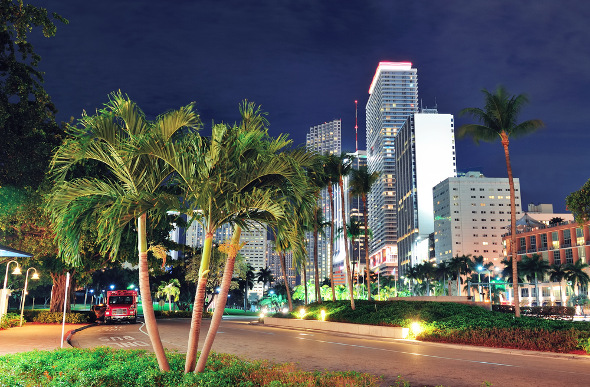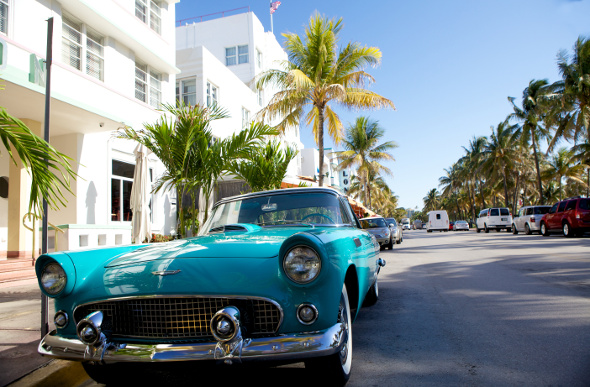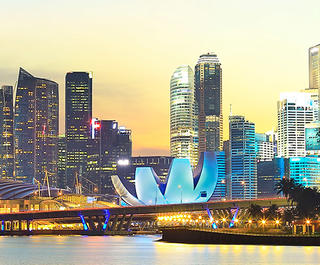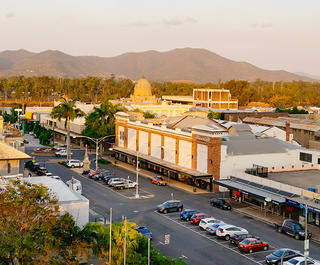
There’s more to Miami than South Beach. The Florida capital is often associated with the sherbet-coloured buildings and glitzy cabanas that line the United States’ most glamourous southern beachfront. But the real Miami begins when you bypass the sequined beachgoers and head for the neighbourhoods responsible for the city’s cultural pulse.
Little Havana, a lively enclave that houses Florida’s thriving Cuban population, should top any Miami agenda. And Little Haiti, a precinct known for independent businesses and a freewheeling arts scene, shouldn't be far behind. Here’s our guide to two of the city’s most vibrant and colourful neighbourhoods.
 Miami in the moonlight
Miami in the moonlight
Lively Little Havana
The vast neighbourhood that unfolds west from the Miami River earned its name in the 1960s when it became an unofficial hub for Cuban migrants. Since then, the precinct has blended old-world traditions with a modern-day take on Hispanic culture.
Little Havana owes its kaleidoscopic character to the technicolour streetside murals which depict scenes of city life. Make sure you stroll along Calle Ocho - an eclectic thoroughfare where shoebox cigar shops sit alongside bustling fruit vendors. Cuban eateries boom out live calypso and serve fish croquetas before workers decamp to Domino Park, where friends and family convene for games of domino.
In recent years, galleries such as Kontempo Art and Molina Fine Art Gallery have seen the precinct play a starring role in Miami’s art scene. Viernes Culturales – a monthly festival that lures revellers with live music and endless mojitos – also keeps the party atmosphere alive and well.
 Fast cars and slow guitars
Fast cars and slow guitars
Spend A Perfect Day In Little Havana
Start with a pork sandwich and Cuban espresso at Sergio’s Restaurant. This local institution is known for fare that’s as wallet-friendly as it is authentic. Next head to the Latin Walk of Fame – a strip dotted with monuments to famous Cubans such as Celia Cruz and Gloria Estefan. Spend your afternoon taking in the works of celebrated Cuban artist Agustín Gainza. His studio is a short stroll from the Calle Ocho. Finally, sip on guaroapo – a sticky liquid made from sugarcane stalks.
Expatriate Flavours In Little Haiti
Little Haiti was shaped by the Haitian refugees who flocked to the neighbourhood in the 1980s. The neighbourhood has since undergone a cultural renaissance and these days, local vendors peddling mangoes and sugarcane rub shoulders with sleek French bistros. Billboards written in Creole also bookend record stores heaving with vintage vinyl and iconic pubs such as Churchill’s. If you’re chasing local flavour, head to the Caribbean Marketplace. This pastel-coloured building channels Haiti’s gingerbread houses and plays host to handmade crafts, a Creole bookstore and an evolving lineup of music and theatre.
How To Size Up Little Haiti
Have breakfast at Leela’s Restaurant – a neighbourhood favourite known for Haitian fare with an American twist. Follow this with a trip down Little Haiti’s side streets, which host the likes of Moksha Family Arts Collective. This mixed-use gallery champions everything from tribal art to electronic music. Finally, spend your afternoon at the Little Haiti Community Garden, where local children grow fresh produce before selling it at the Upper Eastside Farmer Market.










